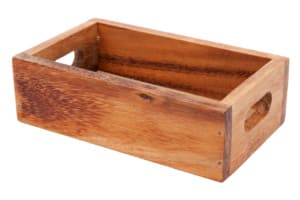
In direct regard to cutting and serving food on wooden boards, the following questions have been answered with facts that have been scientifically proven.
The Australia New Zealand Food Authority, the USDA and FDA all allow and recommend wooden boards made of hardwood, to be used in food preparation and serving. Therefore food can be prepared and presented safely on wood surfaces, whilst plastic cutting surfaces have been scientifically found to have disadvantages.
Cutting boards made of close grained hardwood (such as Acacia wood which is used to manufacture Wild Wood boards) and are the best boards to use. Bacteria found on these wooden boards do not multiply, and gradually die making it safe for kitchen use. Plastic & glass boards are inferior in this respect as they allow bacteria to remain and spread.
In the 1990’s research specifically relating to wooden boards and their health or otherwise was conducted by Professor Dean O. Cliver, a world-renowned expert in food virology. Cliver held a Master of Science and a PhD, was a professor at the University of Wisconsin for 28 years before joining the University of California (Davis) as professor emeritus of food safety for a further twelve years. He served on numerous US national and international committees, and was head of the World Health Organisation Collaborating Centre for Food Virology. Over his life he carried out ground breaking studies of pathogens and bacterial agents. Cliver was a respected and widely published member of the worldwide scientific community and had a unique gift to make science understandable to non-scientists. For this he was widely sought after by the media.
Cliver had broad interests and was involved in other areas of study during his career, one of which included a study of wood cutting boards and food safety, which led to surprising findings that garnered considerable attention. His findings can be found in a paper he wrote which ensured the USDA and FDA authorities permitted the use of wooden cutting boards for preparation and serving of food.
Broadly speaking, and in summary, Professor Clive’s scientific findings were as follows:
It is clear that wooden boards are quite safe to use in any environment, and are acceptable to the Australian Health Authorities.
All fields are required
Select your desired option below to share a direct link to this page.
Your friends or family will thank you later.